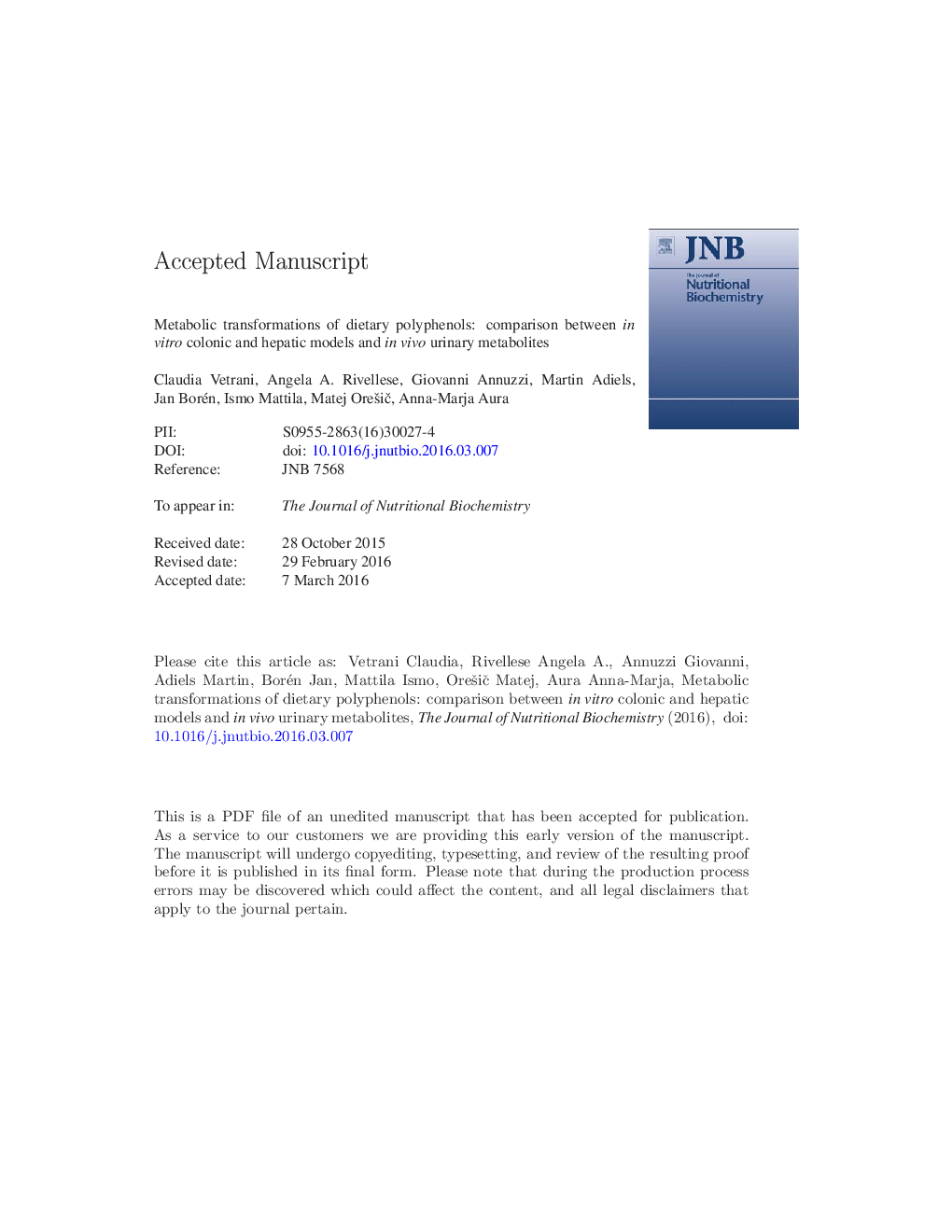| کد مقاله | کد نشریه | سال انتشار | مقاله انگلیسی | نسخه تمام متن |
|---|---|---|---|---|
| 8336572 | 1540635 | 2016 | 25 صفحه PDF | دانلود رایگان |
عنوان انگلیسی مقاله ISI
Metabolic transformations of dietary polyphenols: comparison between in vitro colonic and hepatic models and in vivo urinary metabolites
دانلود مقاله + سفارش ترجمه
دانلود مقاله ISI انگلیسی
رایگان برای ایرانیان
کلمات کلیدی
موضوعات مرتبط
علوم زیستی و بیوفناوری
بیوشیمی، ژنتیک و زیست شناسی مولکولی
زیست شیمی
پیش نمایش صفحه اول مقاله

چکیده انگلیسی
Studies on metabolism of polyphenols have revealed extensive transformations in the carbon backbone by colonic microbiota; however, the influence of microbial and hepatic transformations on human urinary metabolites has not been explored. Therefore, the aims of this study were (1) to compare the in vitro microbial phenolic metabolite profile of foods and beverages with that excreted in urine of subjects consuming the same foodstuff and (2) to explore the role of liver on postcolonic metabolism of polyphenols by using in vitro hepatic models. A 24-h urinary phenolic metabolite profile was evaluated in 72 subjects participating in an 8-week clinical trial during which they were randomly assigned to diets differing for polyphenol content. Polyphenol-rich foods and beverages used in the clinical trial were subjected to human fecal microbiota in the in vitro colon model. Metabolites from green tea, one of the main components of the polyphenol-rich diet, were incubated with primary hepatocytes to highlight hepatic conversion of polyphenols. The analyses were performed using targeted gas chromatography with mass spectrometer (GCxGC-TOFMS:colon model; GC-MS: urine and hepatocytes). A significant correlation was found between urinary and colonic metabolites with C1-C3 side chain (PÂ =Â .040). However, considerably higher amounts of hippuric acid, 3-hydroxybenzoic acid and ferulic acid were detected in urine than in the colon model. The hepatic conversion showed additional amounts of these metabolites complementing the gap between in vitro colon model and the in vivo urinary excretion. Therefore, combining in vitro colon and hepatic models may better elucidate the metabolism of polyphenols from dietary exposure to urinary metabolites.
ناشر
Database: Elsevier - ScienceDirect (ساینس دایرکت)
Journal: The Journal of Nutritional Biochemistry - Volume 33, July 2016, Pages 111-118
Journal: The Journal of Nutritional Biochemistry - Volume 33, July 2016, Pages 111-118
نویسندگان
Claudia Vetrani, Angela A. Rivellese, Giovanni Annuzzi, Martin Adiels, Jan Borén, Ismo Mattila, Matej OreÅ¡iÄ, Anna-Marja Aura,